How far the world of healthcare marketing has come. Think back to 1990, when urgent care centers were originally designed to fill gaps in the health service chain. Since then, urgent care facilities have evolved into a unique niche within the healthcare industry.
Today, urgent care centers fill two critical and complementary roles:
- After-hours and weekend care
- A less expensive alternative to emergency room visits with the bonus of much shorter waiting times
By fulfilling those roles, urgent care centers also appeal to the uninsured as well as younger patients who tend to only seek medical care in case of immediate sickness or injury.
As a result, this subset of the healthcare vertical is growing and growing fast. The transition of urgent care center ownership from physicians and physician groups to larger healthcare systems, alongside the partnerships between those healthcare systems and private equity houses, has catalyzed growth for urgent care centers. In 2019, for instance, the total number of urgent care centers in the U.S. grew by 6%. According to the Urgent Care Association (UCA), roughly 89 million patients visit urgent care centers each year.
Urgent care centers have also proven to be nimble during trying times. When COVID-19 hit the United States in early 2020, urgent care centers’ patient numbers dwindled and many quickly jumped into the role of providing telehealth (a much-needed service). The UCA also requested that urgent care centers be included as coronavirus testing sites and UCCs and UCA proactively planned for increased testing, screening, and immunizing (for when a COVID-19 vaccine indeed becomes available, which is looking like it’ll happen sooner every day).
Given the emerging and evolving role of urgent care in the U.S., what trends should healthcare marketers prepare for in 2025 and beyond?
The New Rules of Marketing for Urgent Care Centers
Urgent care centers are an integral part of the patient acquisition strategy for most healthcare systems. They often act as a gateway through which medical groups bring in new patients and provide them with speciality care, follow up visits, and connection to primary doctors. How these centers are marketed, however, is a bit different compared to other healthcare services.
By its very nature, urgent care is, well, urgent, which means patients spend less time researching various providers. Instead, they go for convenience and speed, often contacting the provider who is nearest to them with the most reputable online presence.
To remain top of mind when emergencies do arrive, urgent care center marketers need to build brand recognition over a longer period of time via quality content, digital and print advertising campaigns, and a social media presence.
Here are eight ways trends and tactics that healthcare marketers can use to expand reach and impact for urgent care.
1. Optimize and Regularly Update Your Google My Business Listing
When a potential patient is looking for urgent care, an optimized Google My Business (GMB) listing can be the deciding difference between providers. Prospective patients are likely ready to schedule an appointment, call immediately, or walk-in, and location proximity will put you right at the top of their list as long as you have an accurate and up-to-date listing including website, hours of operation, services provided, a phone number, and the correct physical address so Google can serve all of this information up in search results.
GMB is free for the time being and will prove a valuable tool for the foreseeable future as long as you take advantage of all of its features. In an April Ignite podcast with Kurt Lee, CMO of American Family Care, we discussed the importance of taking advantage of this free resource. “Think about the real estate value of a digital footprint on the right-hand side of a search engine return page, that size with that many attributes that are all tied into hundreds, if you do it right, hundreds of intricate webs of additional things that play into it,” Kurt Lee told listeners.
Here are examples of some healthcare providers’ GMB listings with varying levels of information. If your kid was sick or you just cut your thumb open slicing a bagel, which listing inspires trust and action on your part?
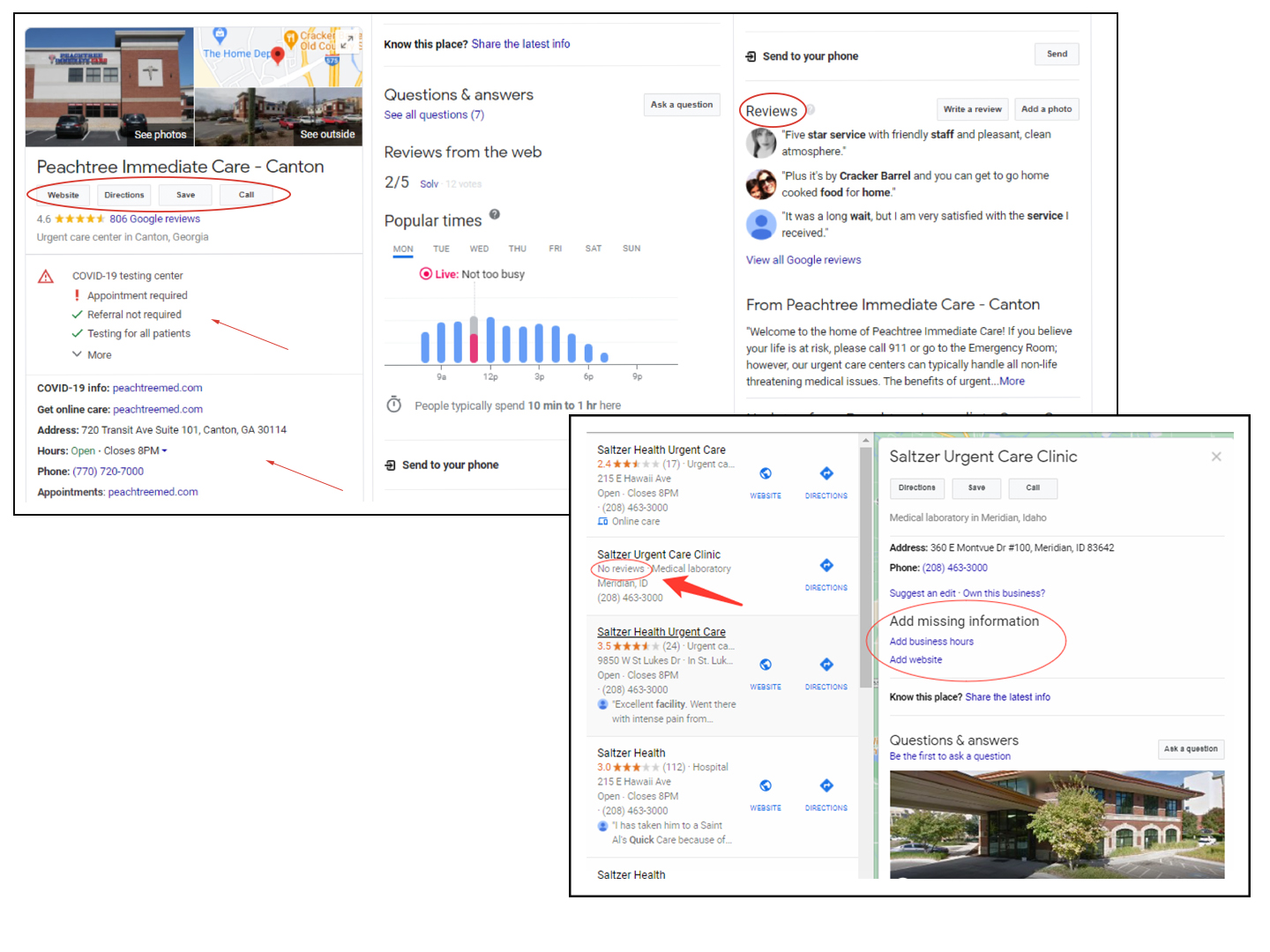
Read “How to Optimize Your Google My Business Listing in 2020” to get more tips on how to optimize your GMB listing so it stands out from your competitors.
2. Invest in Zero-click
Zero-click attribution occurs when a digital user performs a search and takes immediate action from the first page of search results—no click-through to a website necessary. This includes when a user finds your GMB listing and also when a “Featured Snippet” from your website content answers a user question, and then, without ever going to your website, the user calls, gets directions, or books an appointment.
The zero-click search has been on the rise since its launch in March 2017. According to Jumpshot research, 49% of all U.S. Google searches ended in a zero-click. Recently, more than half of all Google searches are now zero-click searches, for a simple reason: it requires the least amount of effort and people can get their questions answered immediately. When looking for an urgent care provider during an emergency, this kind of search experience is ideal.
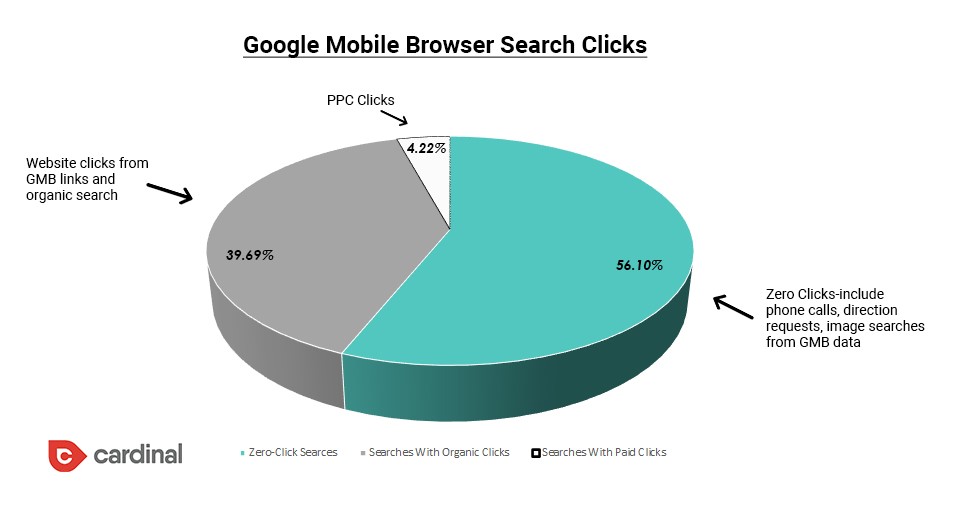
The zero-click algorithm helps users quickly find answers instead of browsing web pages. If the user likes your snippet, they take action. Here are a few things you can do as an urgent care center to benefit in this era of zero-click:
Pay Attention to Google Trends. What are your potential patients most interested in right now? Why are they seeking out urgent care? Write content for the current most frequently searched words and phrases. You can imagine that as long as coronavirus is at the center of the world stage, it will be at the top of our search engine queries; but even those searches will be nuanced depending on what else is relevant, whether that’s symptoms, rallies, protests, or vaccines.
Customize for your unique locations. If you have multiple urgent care locations, prioritize questions that are specific to those unique locations. For example, if you have urgent care facilities in regions with high wildfire activity, there is great potential that people will be searching “dangers of smoke inhalation” versus areas of potential flood damage and accompanying black mold health risks.
Optimize your content for featured snippets. SEO is what drives rankings here and if you’re targeting your prospective patients accurately, Google will place your content in front of those who need to see it. Use non-branded keywords that are treatment-focused, such as “stitches for knife wound” or “common cold symptoms.”
Answer commonly asked questions in concise paragraphs. Paired with well-executed SEO, this strategy helps rank your content ahead of competitors and potentially fetch more snippets. But that doesn’t mean you need to cut down all your website copy to fit into tidy paragraphs; some users will still want to go to your website to learn more and dive deeper into the answers you provide and you want to appeal to those users, too.
3. Expand Beyond Google (Your Patients Are)
When healthcare consumers need information, many go to popular health websites such as WebMD and PlushCare. People visit them to get information about their health conditions, choose healthcare providers, and read reviews by other patients. It’s a lot more convenient to visit one of these sites with aggregate information than to independently compare healthcare providers, which can be time-consuming.
Make sure you create and maintain profiles on these popular websites, and pay attention to trusted healthcare provider review sites like RateMDs, ZocDoc, and Healthgrades.com. All of this is part of your online reputation, something patients are very interested in when evaluating urgent care centers.
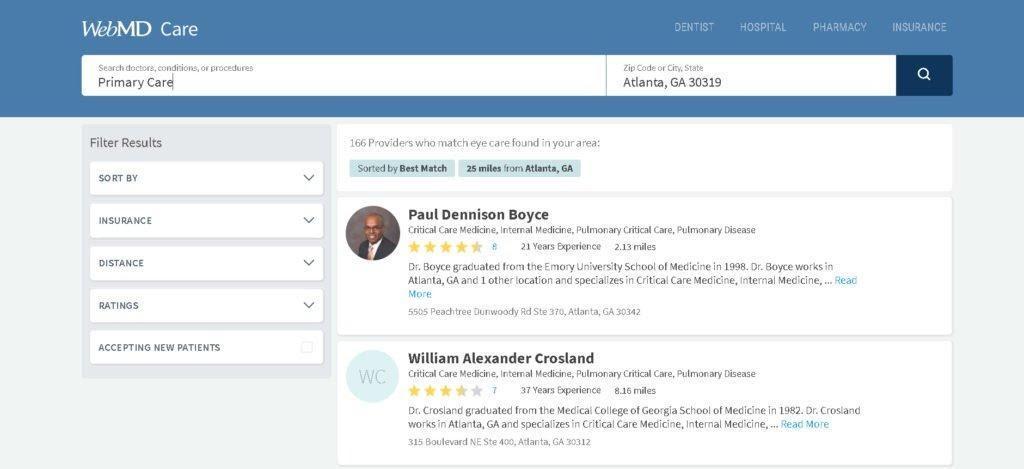
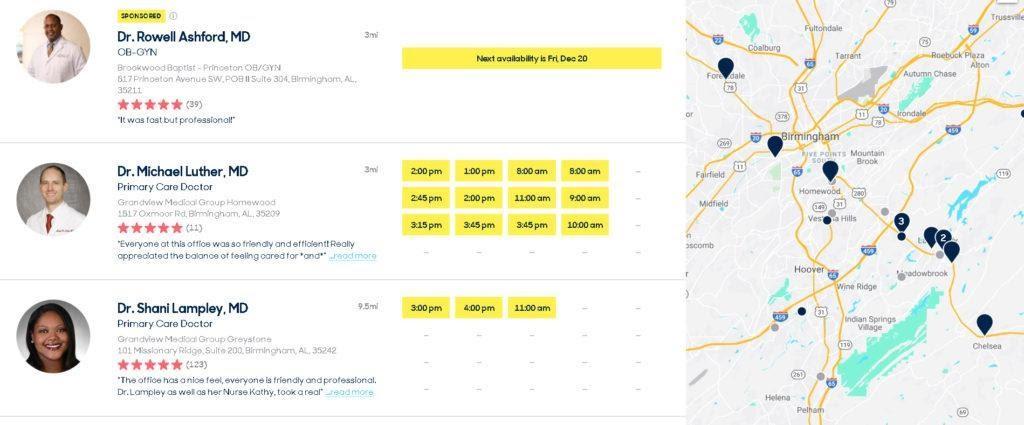
Build profiles on any specialty or local databases, too, even if you have multiple locations. If your urgent care center is providing COVID-19 screening, testing, and/or vaccines, make sure it’s registered with the Urgent Care Association and listed on the database. Essentially, be easy to find beyond just Google.
4. Track Every Campaign
From the first time a person sees your digital ad or a billboard in your community to the follow-up evaluation survey, they are providing valuable insights into how your urgent care center can improve both your patient service and your marketing strategy.
If you’re not utilizing call tracking software, you’re missing out on valuable information that can help you determine how people are finding you and what it takes to convert a person to a patient. If you’re not paying close attention to the performance of your pay-per-click (PPC) digital ads, or collecting data on website activity, it’s time to start. And if you haven’t quite taken the leap into using a CRM, schedule some demos and phone calls and see what’s out there and how it can provide value.
Again, from Kurt Lee:
“You’d be very shortsighted if you did not look at every aspect of [marketing] from the top of the funnel all the way to the end-result ROI. That’s what I do is I look at it as, let’s say, a linear roadmap that starts here and ends here. There are all these attribution points across that linear map and see where things are at. It’s going to look almost like a graph.”
What you’ll likely reveal are actionable insights into how people seek urgent care in general, and why they do or don’t choose your facilities to seek care. This information can directly inform the way you message, position, and advertise your urgent care facilities.
If you’re considering implementing call tracking software at your urgent care center, read our article “Why You Need Call Tracking at Your Healthcare Organization.” We explain how it works, how to integrate it into your existing analytics tools, and what you need to look for in a call tracking solution.
5. Enhance Lead Quality Through Strategic Funnel Management
Not all leads are created equal in the urgent care field. A high volume of unqualified leads can overwhelm your front desk staff and waste valuable resources. Consider implementing a strategic funnel management approach to improve the quality of leads coming into your urgent care center.
Start by evaluating your current lead sources:
- Analyze conversion rates from different channels (e.g., organic search, paid ads, social media)
- Identify which sources bring in patients that are most likely to use your services
- Look for patterns in the types of services these high-quality leads are seeking
Once you have this information, you can refine your marketing efforts with these strategies:
- Tailor your messaging to attract your ideal patients. For example, if you specialize in pediatric urgent care, ensure your content and ads highlight this unique service.
- Use targeted keywords that align with the services you want to promote. “24/7 urgent care” or “walk-in X-ray services” can help you stand out to specific patient needs.
- Implement lead scoring to prioritize follow-ups. Assign higher scores to leads that match your ideal patient profile or show interest in your core services.
One effective tactic is to create service-specific landing pages. For instance, a page dedicated to COVID-19 testing can provide valuable information and capture leads specifically interested in this service. This approach improves lead quality and helps educate patients about the importance of timely care.
To further refine your lead quality, consider these additional strategies:
- Offer valuable content gated behind lead capture forms, such as “When to Choose Urgent Care vs. Emergency Room” or “10 Signs You Need Immediate Medical Attention”
- Use chatbots on your website to qualify leads before they reach your staff. Simple questions about symptoms and urgency can help route inquiries effectively.
- Implement a robust CRM system to track lead progression and identify bottlenecks in your conversion process.
After implementing these strategies, a multi-location urgent care provider we consulted saw an increase in qualified leads. They focused on creating location-specific content and targeting patients within a 15-mile radius of each center, resulting in more relevant inquiries and higher conversion rates.
By focusing on lead quality over quantity, you’ll improve your marketing ROI and ensure that your staff can provide the best possible care to the patients who genuinely need your urgent care services.
6. Create Helpful, Educational Content for Your Patients
If you want to reach out to and attract more patients to your urgent care center, commit to creating a regular cadence of high-quality, helpful content that answers the medical needs of prospective patients. Content is king now, and it will remain important in 2025 and beyond.
Publishing authoritative, useful content helps build trust and brand recognition that pays off when a person suddenly needs to find an urgent care clinic.
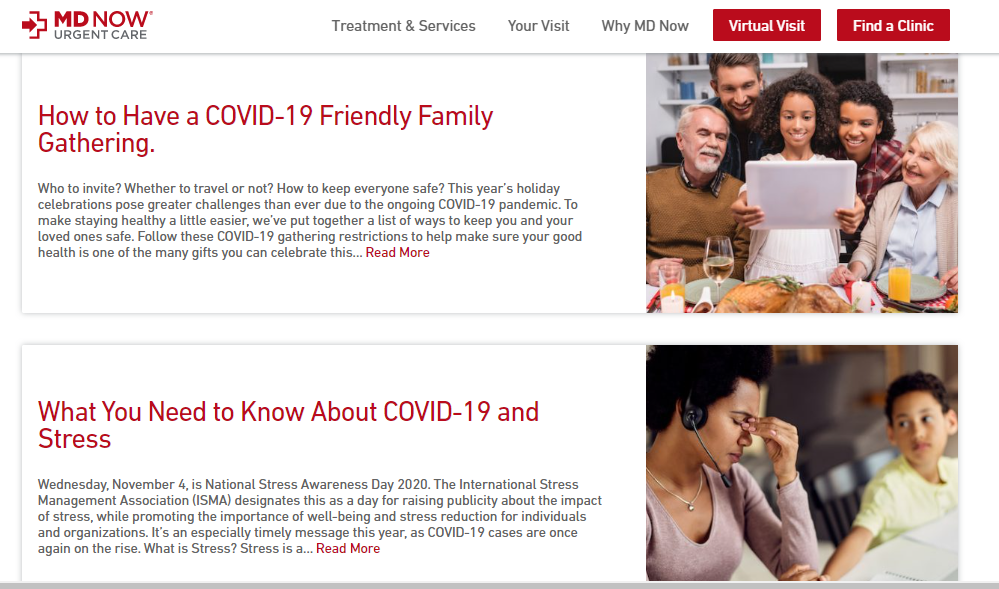
Remember, though, that content marketing isn’t meant to make your website look more robust or sexy (this is urgent care, after all); it’s meant to help your patients. Be known for bringing value no matter how people find you, whether it’s through organic search, an email campaign, or digital advertising. Here are some ideas:
- Physician-approved guides for treating common injuries or ailments that don’t typically require urgent care (but that people come in for anyway)
- What to expect during an urgent care visit
- Insurance and cost information for urgent care visits
- Tips for staying healthy during flu season
- Guides on when to visit an urgent care provider versus an emergency room.
- FAQs
Not only will educational content help your patients, but it’ll also help you rank higher in the search engines. As we mentioned earlier, this is the kind of content that will help you snag one of Google’s “Featured Snippets.” Focus on the questions potential patients have, and create comprehensive guides that answer any questions they may have.
While we’re talking about content, remember it can come in many forms…
7. Prioritize Video Content
The impact of video marketing cannot be underestimated in promoting your urgent care center. Videos can be fun, personable, informative, and memorable. If a picture is worth a thousand words, a video might be worth a million.
If you’re thinking video is just for social media, think again. According to HubSpot, “Video on landing pages is capable of increasing conversion rates by over 80%, and the mere mention of the word “video” in your email subject line increases open rates by 19%. 90% of customers also say videos help them make buying decisions.” In an urgent care situation, specifically, a video might be faster and easier to consume than an article, blog, or website content.
Make sure that your videos are concise, engaging, professional, and relevant to prospective patients. Quality is important. That does not mean you need to spend a lot of money on video equipment or a production team; in fact, the video recorder on your smartphone is more than adequate and exactly what viewers are used to seeing. The point is to bring value to the patient’s journey.
Tell a compelling story. When creating video content, share what makes your urgent care center unique, such as your new facilities and clean waiting room. Always remember that people are more likely to respond and engage with videos that are relatable, informative, and authentic.
Educate. Patients need information they can understand so skip the incomprehensible medical jargon. Instead, discuss medical conditions in simple terms that your audience can understand. Your videos should discuss what services are provided at your urgent care center, along with hours of operation and how to schedule an appointment or check-in online.
Be empathetic and positive. During the coronavirus pandemic, YouTube users began looking for videos that made them feel good. Share positive patient stories, fun moments with your staff, and uplifting messaging. Show the human side of your urgent care center. Remember that this is an uncomfortable and sometimes scary situation for your patients.
Read “How Healthcare Marketers Can Make Better Use of Video” to get more tips on how to improve your storytelling skills and create compelling videos that resonate with potential patients.
8. Be Seen on Social Media (Paid and Organic)
There are more than 3.8 billion users on social media platforms (which equals about 42% of the total world population), according to Insights. Like any other business that needs to reach new customers and stay connected with existing customers, urgent care centers can use social media channels to share operations information, as well as all of the excellent content and videos your marketing team creates.
You can share posts to reach your existing followers and continue building brand trust with them. This is free and if you create compelling and useful content, it’s possible that your followers will tag or share your posts with new potential patients.
You can pay to target specific geographic locations, demographics, or even people with specific interests. This might include high-risk activities, such as mountain biking and skydiving, that often require urgent care. Consider using dayparting to run campaigns only when your users are online and most likely to engage; for example, after work hours or on the weekends. The goal is to create awareness around your urgent care center so that your centers stay stop of mind when the time comes.
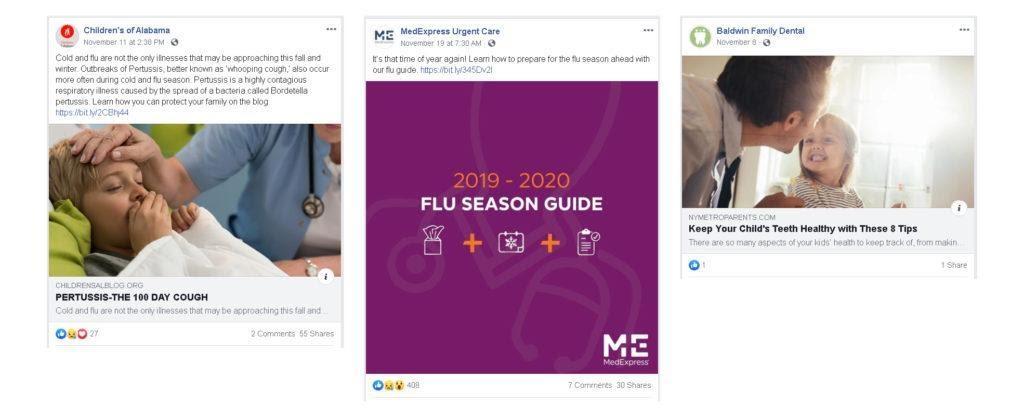
9. Remember That Your Website is Part of the Patient Experience
Your website’s user experience matters a lot, both for algorithms and human beings. Google considers UX as a ranking factor, so if your website has confusing content, poor navigation, or slow loading times, you’ll rank lower. Make sure that your website’s hierarchy is logical and your navigation is easy to understand both on desktop and mobile.
Your site also needs to be engaging for humans and end their journey in your office. Web users have high expectations and short attention spans—you’ve got about 30 seconds to capture their attention upon arrival.
Make sure to give them what they came to your site for!
Remember, these people are looking for an urgent care provider. Maybe they saw your ad for a COVID-19 test or vaccine. Or they might be considering an urgent care visit based on a specific injury or symptoms. When they reach your site, it should be easy for patients to find what they need and, if needed, find their way to your urgent care facility.
To improve patient access, more urgent care providers are offering online scheduling. Patients can view appointment availability at the urgent care center and book a time slot that is convenient for them. Instead of waiting in the urgent care center, unsure of when they’ll be seen, they can wait in the comfort of the home and decrease the amount of time spent in the waiting room.
Another new technology that’s being implemented on more urgent care provider websites is AI-powered chatbots. When someone has an accident or is feeling unwell, the questions that come to mind are “Do I need to see a doctor?” and “Where should I go for help?” People are looking for information to help them decide whether they should visit an urgent care center, their primary care physician, or the emergency room. Chatbots can be deployed across your website and configured to guide visitors towards the best option for their condition. They come in varying levels of sophistication and ability. Some are rule-based and follow simple scripts, while others can have more nuanced conversations and provide tailored information to users.
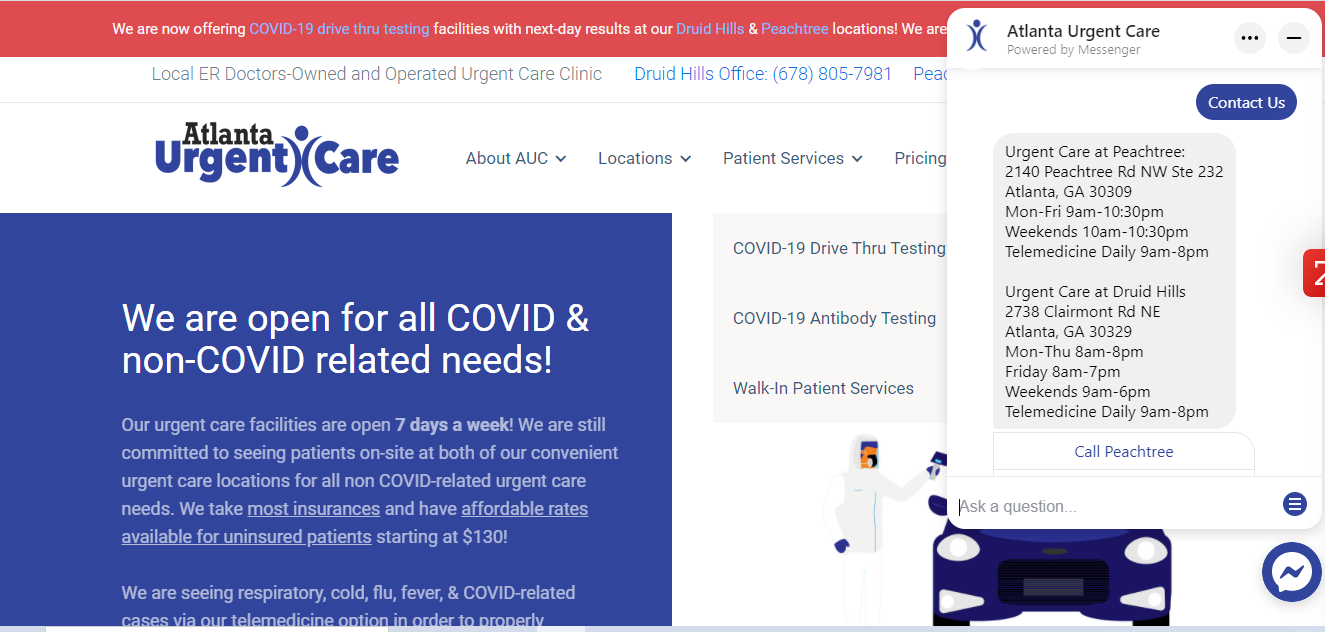
Read our article “How Chatbots Can Improve the Patient Experience” to learn more about the different types of chatbots, how they work, and what they look like in practice.
10. Take Advantage of Performance Max
As urgent care centers aim to capture the attention of patients needing immediate medical attention, Google’s Performance Max (PMax) offers a powerful tool to reach potential patients across multiple digital touchpoints. This AI-driven approach allows you to showcase your urgent care services across Google’s entire advertising inventory, including Search, Display, YouTube, and more.
When implementing PMax for your urgent care marketing strategy, keep these critical points in mind:
- Asset Variety: Upload a diverse range of high-quality assets, including images of your facility, staff, and satisfied patients, along with informative videos about common urgent care services. This ensures your ads appear professionally across various platforms.
- Conversion Tracking: Set up proper conversion tracking beyond simple lead generation. This might include appointment bookings, check-ins, or completed visits to urgent care centers.
- Audience Signals: Utilize first-party data from your existing patient base to help Google’s algorithm identify similar individuals likely to need urgent care services.
- Experiment Wisely: Don’t completely abandon your existing search campaigns. Instead, use Google’s experiment feature to test PMax against your current strategies and measure the incremental value it brings.
One urgent care center we worked with saw a 25% increase in new patient visits after implementing a well-structured PMax campaign. The center focused on showcasing its short wait times and range of services, which resonated with patients looking for quick, quality care.
Remember, the success of PMax hinges on the quality of information you feed into it. By providing clear goals and high-quality assets, you’re setting up your urgent care center for digital marketing success across Google’s expansive network.
Immediacy and Convenience Have Never Been More Important
The evolution and expansion of digital channels are continuing at a dizzying rate, with no signs of stopping. Patients have more options than ever, and that includes finding and selecting an urgent care provider. What’s more, there’s an opportunity for urgent care providers to educate and inform patients, especially in the era of COVID-19 where many patients would rather stay out of urgent care (if they can) to avoid exposure.
What we’re talking about is making the effort to align marketing efforts with what the patient journey is today—to empathize with those experiences and bring patients valuable, relevant content every step of the way. In our view, this will be how marketers differentiate urgent care providers in 2025 and beyond, and the eight trends above are a terrific place to start.

